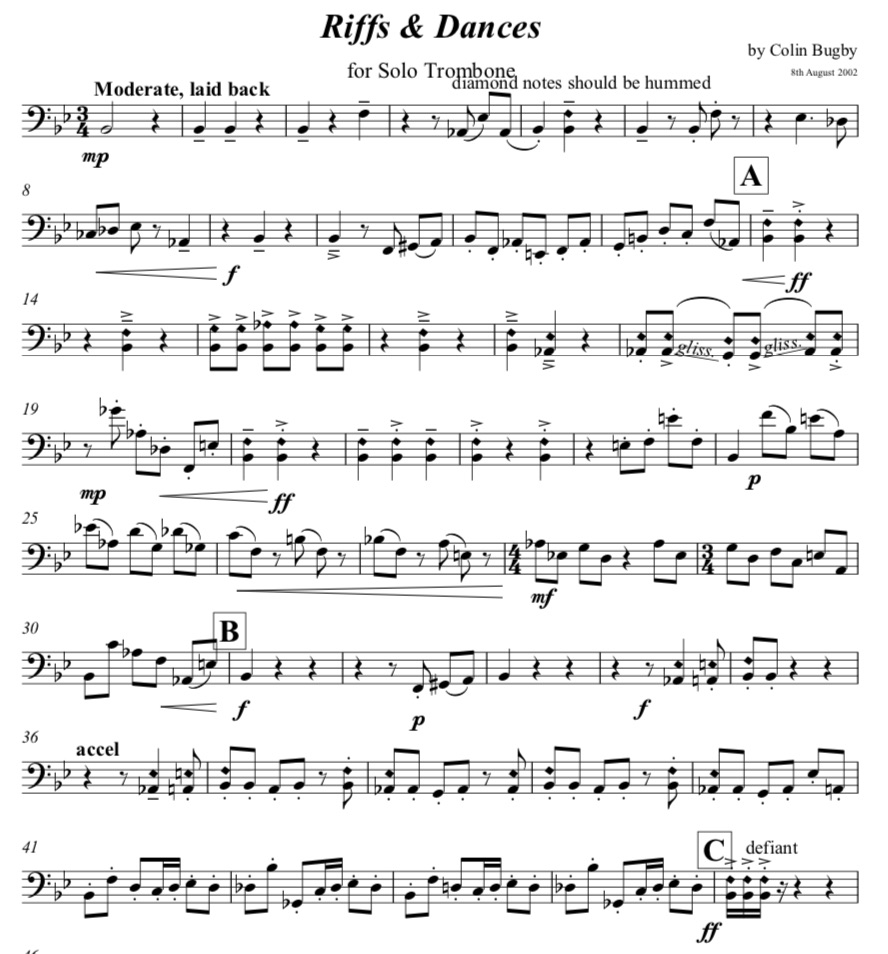Riffs & Dances: A Review
 Bugby, Colin. Riffs and Dances for Solo Trombone. Rushden, England: Colin Bugby, 2002. Website: www.colinbugby.co.uk
Bugby, Colin. Riffs and Dances for Solo Trombone. Rushden, England: Colin Bugby, 2002. Website: www.colinbugby.co.uk
Usually reviews help potential buyers decide whether or not to purchase a piece. In this case, the dilemma is resolved by the fact that Riffs and Dances is available for free. This is a moderately challenging, through-composed piece for unaccompanied trombone ranging from pedal B-flat to high D-flat (the F-attachment range isn't used, though). The slow opening begins somewhat haltingly around the tonal center of B-flat. One can hear the influence of jazz in some bass-line "riffs", extended sequences and syncopated rhythms. This slow material serves as an introduction to a fast section with lighter, playful syncopations reminiscent of ragtime. While these faster figures stay largely tonal, Bugby occasionally throws in some atonal curve balls. A brief return of the slow material soon gives way a lively ending. The occasional appearance of multi-phonics doesn't prove overly difficult and may serve well as an introduction for players unfamiliar with this technique. Bugby writes mostly parallel fifths between the voice and trombone. I am troubled by his frequent fortissimo dynamics during these multi-phonic sections. Balance between voice and trombone is already difficult enough to achieve. A true fortissimo by the trombone will render the voice inaudible.
While most of the piece is within reach of a strong undergraduate player, Bugby sometimes throws in passages much harder than the surrounding material. Examples can be found with the high C-D-flat line in m. 52, the relatively high tessitura in mm. 96-102 and the odd atonal departure in mm. 92-95. These passages may serve Bugby's musical aims, but will also frustrate players who can otherwise handle the piece.
Though the piece has several nice moments, as a whole it seems to need more compelling direction. I find this particularly true with the halting figures at the piece's slow opening. Do the frequent rests build suspense or stifle momentum? Bugby does achieve some unity through a recurring syncopated sixteenth note motive and some of the fast riffs are fun to play. They might serve well as sight-reading material for advanced students. When all is said and done, however, the price is right!
